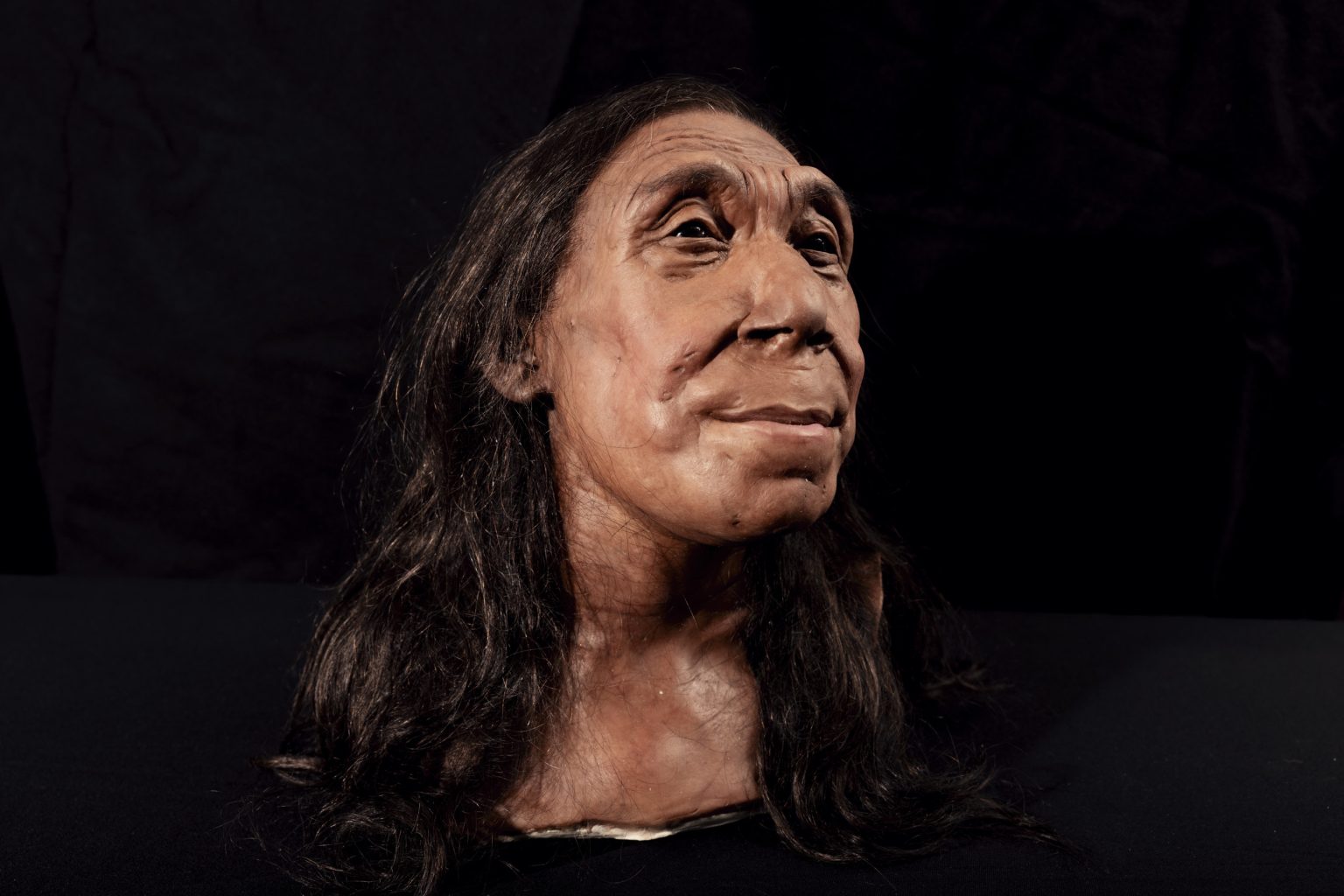A facial reconstruction of a Neanderthal woman, dubbed “Shanidar Z,” who lived approximately 75,000 years ago, has been revealed in a new documentary titled “Secrets of the Neanderthals.” The remains of Shanidar Z were excavated in 2018 from Shanidar Cave in Iraqi Kurdistan, a significant Neanderthal archaeological site. The documentary, produced by the BBC Studios Science Unit, follows a research team led by experts from the University of Cambridge and Liverpool John Moores University as they return to Shanidar Cave to continue their investigations. Neanderthals are one of our closest extinct relatives and lived in Eurasia until about 40,000 years ago, coexisting with anatomically modern humans.
The facial reconstruction of Shanidar Z was based on the remains of the female found in the cave, which included an articulated skeleton almost down to the waist, including a significantly flattened and heavily fragmented skull. The reconstruction process involved painstakingly piecing together more than 200 fragments of the skull that had been crushed, possibly by rockfall, soon after death. The reconstructed skull was then scanned to create a digital reconstruction, which was 3D-printed to form the basis of a model of the Neanderthal woman’s head. World-leading paleoartists Adrie and Alfons Kennis added layers of fabricated muscle and skin to reveal her face.
Paleo-anthropologist Emma Pomeroy from Cambridge’s Department of Archaeology explained that Neanderthal skulls have distinct features such as huge brow ridges and lack of chins, resulting in more prominent noses. However, the recreated face of Shanidar Z suggests that these differences were not as stark in life, potentially explaining how interbreeding occurred between Neanderthals and anatomically modern humans. Analysis suggests that Shanidar Z was in her mid-40s when she died, a significant age in prehistory where she would have been a repository of knowledge for her group.
The discovery and reconstruction of Shanidar Z provide valuable insights into the lives of Neanderthals and their interactions with anatomically modern humans. The facial reconstruction allows researchers and the public to visualize a Neanderthal individual from thousands of years ago, shedding light on their physical appearance and potential social roles within their community. The documentary “Secrets of the Neanderthals” offers viewers a unique opportunity to learn more about Neanderthals and the ongoing research being conducted at significant archaeological sites such as Shanidar Cave.
As an older female, Shanidar Z may have played a crucial role in her group as a source of knowledge and experience. The reconstruction of her face offers a glimpse into the life of a Neanderthal woman who lived tens of thousands of years ago, allowing researchers to study her physical characteristics and potentially gain a better understanding of Neanderthal society. The significance of Shanidar Z’s discovery lies in the new information it provides about the lives of Neanderthals and the potential interactions between different human species during prehistoric times.
Overall, the facial reconstruction of Shanidar Z and the upcoming documentary shed light on the world of Neanderthals and their relationships with anatomically modern humans. By reconstructing the face of an individual who lived thousands of years ago, researchers aim to bridge the gap between the past and present, offering valuable insights into the lives and societies of our extinct relatives. The continued study of archaeological sites such as Shanidar Cave provides opportunities to uncover more secrets of the Neanderthals and expand our knowledge of human evolution.


